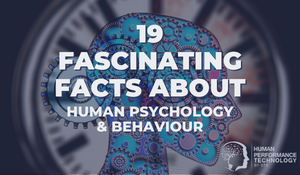Top 5 Logical Fallacies for Better Business Thinking
As a formal system of study, logic is quite diabolical, but even a brief study of selective parts within this field can pay big dividends. For instance, taking a few minutes to learn some of the most common logical fallacies is knowledge that can serve you well for the rest of your life. With logic on your side, you can make better decisions, persuade your boss, win arguments, and in my case, write articles about logic. There’s nothing logic can’t do for you!
With that in mind, here are my top 5 logical fallacies for better business thinking.

1. Ad Hominem
Latin for “to the man” or “to the person” an Ad Hominem attack is probably the most common logical fallacy you’ll encounter—especially if you read online comments. It occurs when the character, intelligence or credibility of an individual is attacked, scrutinised, or questioned instead of dealing with the substance of the argument they are presenting. As demonstrated by lawyers, this tactic can be an extremely effective means of nullifying a person’s testimony if they're able to cast enough doubt on a witness's character. It is, however, a logical fallacy to assume that because there is something questionable about the person that it automatically invalidates a specific line of reasoning being advanced.
Example: “Sarah would have you believe that hard work, a focus on culture, self-belief, understanding metrics, and hiring are all key factors in business success. Sarah, however, has no MBA, only 1 year of business experience, and has made questionable decisions in her personal relationships. Sarah is an idiot. We shouldn’t listen to anything she has to say about business.”
[Argument engages with the person rather than the issue]

2. Straw Man
Especially common in political discourse, the Straw Man Fallacy involves misrepresenting, exaggerating, distorting, or oversimplifying your opponent's position in order to make it easier to attack. In essence, a different and inferior version of the real argument is created—like a straw man or scarecrow that isn’t really real but looks real from a distance—which can be easily cut down.
Example: “When Mike says that culture eats strategy for breakfast, he buys into the myth that strategy doesn’t matter in business. He would have you all believe that we only need to focus on culture to be successful. Mike is not fit to lead this company with such a narrow and dangerously uninformed understanding of business.”
[Argument distorts the meaning of “culture eats strategy for breakfast”]

3. False Dichotomy
Also known as Black-or-White, Either-Or, False Choice, False Binary, and the Fallacy of the Excluded Middle, this is a common logical fallacy in which only two possibilities or options are presented, when in fact more exist.
Example: “Make up your mind, Jennifer. Are you an introvert or an extrovert? You do know that all people are either introverted or extroverted, don’t you?”
[Argument ignores the middle ground position known as ambiversion]

4. False Cause / Post Hoc
Often captured in the popular slogan “correlation does not imply causation,” this fallacy occurs when it is assumed that one thing caused another thing, when the relationship may be explained by other factors.
This fallacy is also referred to as “Post Hoc”—shorthand for the Latin phrase post hoc ergo propter hoc("after this, therefore because of this")—meaning that because Y event (e.g., sun rising) happened after X event (e.g., rooster crowing), X event caused Y event.
This fallacy does not mean that all correlational evidence should be thrown out the window. For decades, cigarette companies used the False Cause Fallacy to their advantage to cast doubt on their opponents’ claims that smoking is dangerous to your health. Correlational evidence is extremely important in science, but it's also important to remember that causal relationships can be very difficult to establish.
Example: “Our sales have been strong all year until Bob wore green socks to work on Monday, which is precisely when sales began to decline sharply. Therefore, the wearing of green socks is banned in the office.”
[Argument correlates the timing of two coincidental events and assumes a 1:1 relationship]

5. Faulty Generalisation (Hasty vs. Sweeping)
Also know as an Insufficient Sample, Statistical Generalisation, and an Inductive Generalisation, the Hasty Generalisation applies inductive reasoning (involving the use of a small number of examples or events) to draw a conclusion in a way that is not valid. The Sweeping Generalisation Fallacy, on the other hand, applies deductive reasoning (involving the use of general rules, laws, theories, and existing models) to draw a conclusion in a way that is not valid.
Hasty Example: "Jack and Jill, who are both accountants, are boring. Therefore, all accountants must be boring."
[Argument uses insufficient evidence to draw an incorrect conclusion]
Sweeping Example: "Accountants have a reputation for being boring. Jack and Jill are accountants. Therefore, Jack and Jill must be boring."
[Argument assumes that Jack and Jill, who we haven't met, are boring—when we don't have any actual data to verify this conclusion]
Topics:
Smarter Thinking
Theo Winter
Client Services Manager, Writer & Researcher. Theo is one of the youngest professionals in the world to earn an accreditation in TTI Success Insight's suite of psychometric assessments. For more than a decade, he worked with hundreds of HR, L&D and OD professionals and consultants to improve engagement, performance and emotional intelligence of leaders and their teams. He authored the book "40 Must-Know Business Models for People Leaders."

/Simon%20Sinek%20You%20Build%20Trust%20The%20Same%20Way%20you%20Fall%20In%20Love.png?width=374&name=Simon%20Sinek%20You%20Build%20Trust%20The%20Same%20Way%20you%20Fall%20In%20Love.png)

We Would Like to Hear From You (0 Comments)